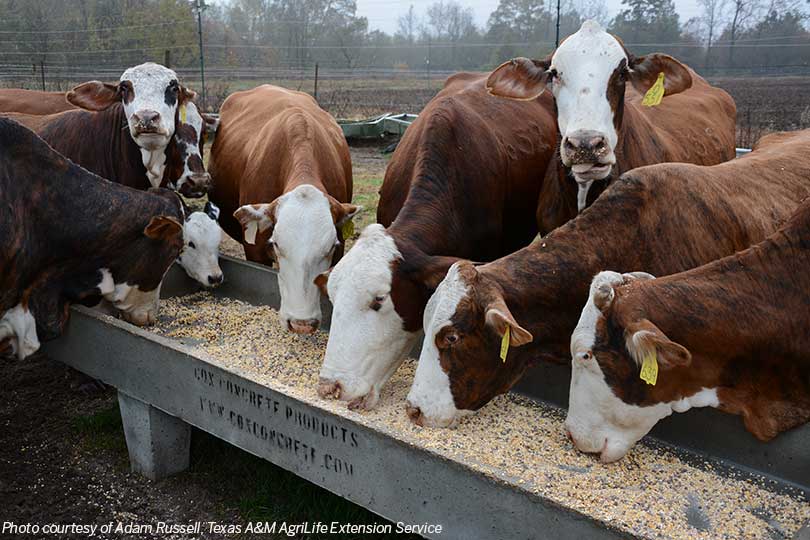Proper nutrition and supplementation during winter months is critical to ensure cows are in optimal condition for pregnancy, calving and future breeding, according to Texas A&M AgriLife beef cattle specialist Dr. Jason Banta.
Body condition scores at calving are important to help produce healthy calves in the future, Banta said.
At calving, cows that are two and three years old should have a body condition score of 6 or better, according to Banta. Cows four years old and older should be in a body condition score of 5 or greater at calving.
Abundant muscle tissue should display on cows with a body condition score of 5. Ribs are noticeable but overall fat cover is lacking. Hooks and pins are less obvious and hips and backbone are slightly rounded versus a sharp appearance, according to the AgriLife Extension overviews.
Cows that are ideal at calving have a body condition score of 6. Ribs are covered completely with fat and beginning to cover the rump, and muscle tissue is at its greatest.
To determine winter feed supplementation, hay should be tested for nutritional quality, Banta said. The nutrient requirements of the animal, the quality of available hay or roughage and the current condition of the cows can be used to develop a supplementation plan.
“When evaluating pasture or hay, consider the nutrient requirements of the cow,” Banta told AgriLife Today.
The stage of production the cow is in can affect their nutrient and supplement requirements.
Lactating cows require different amounts of supplementation than dry cows, Banta said.
A lactating cow would require hay that is about 11.5 percent protein and 62-63 percent total digestible nutrients (TDN). A dry cow in late gestation would need about 8 percent protein and 55 percent TDN, according to Banta.
Cost per unit of nutrient needed should be considered when selecting supplements.
If both energy and protein supplements are needed, a 20 percent cube would likely be most cost effective, Banta said. But if only a protein supplement is needed, then a 40 percent cube is more cost effective.
Feeding cows supplements too quickly can lead to digestive problems such as acidosis, which can lead to founder, foot abscesses, damage to the rumen lining or death. Banta said ranchers should start slow and build up with supplements, such as concentrates and grains.
He recommends starting with no more than two pounds of supplement per cow per day and slowly building up from there.
Manure patties should be checked to monitor cows’ protein intake, Banta said.
“If patties look like they are stacking up and are firm, that tells us we need more protein supplement,” Banta said.
Banta recommends ranchers visit with a nutritionist or an AgriLife Extension beef cattle specialist to discuss feeding amounts.

